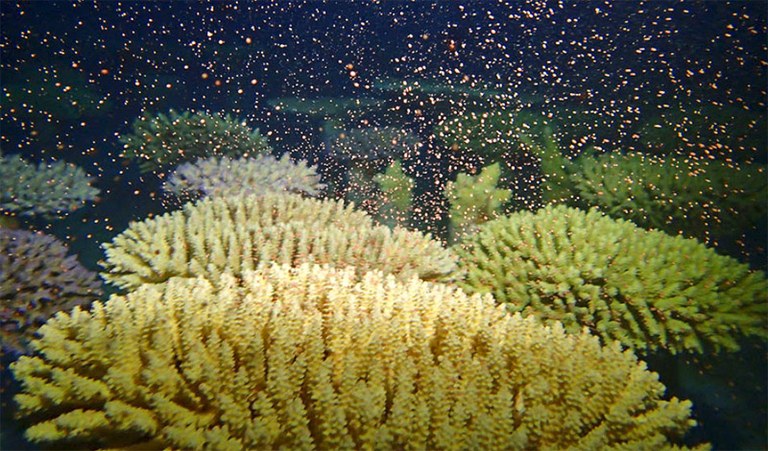Onna Village Fisheries Cooperative, Okinawa, Japan, has outplanted more than 40 scleractinian coral species, under permits issued by Okinawa Prefecture. The Coop has established a unique and successful rearing method for outplants. Seeding outplants at the periphery of existing colonies has been suggested as a means of enhancing larval settlement to increase coral abundance, density, and cover during reef rehabilitation. During sexual reproduction, synchronous spawning maximizes fertilization rate by generating high gamete concentrations.
Researchers report large-scale synchronous spawning of approximately 2800 colonies of outplanted Acropora tenuis in Maeganeku, Onna, Okinawa. On 26 June 2015, 25 nights after the full moon, almost all outplanted colonies released bundles synchronously for approximately five minutes starting at 19:47 hrs, 21 min after sunset . Average water temperature from the surface to 4 meter depth was 29.4 C.
There have been concerns about reduction in genetic diversity in reef rehabilitation using asexual propagation methods; however, sexual reproduction by synchronized spawning of outplanted colonies should ensure levels of genetic variation equal to those of natural spawning. Along with increasing larval supply, habitat restoration is crucial for maintaining healthy coral reefs, and under unfavorable environmental conditions, coral larval supply cannot be enhanced efficiently by transplantation and outplanting. Continuous observation of recruitment, postsettlement survivorship, and growth in recipient habitats will be needed to determine the effects of spawning events such as that reported here.

Field of transplanted coral colonies at Okinawa during the day.
Content provided by Coral Reefs (open access paper). Note: Content may be edited for style and length.










0 Comments